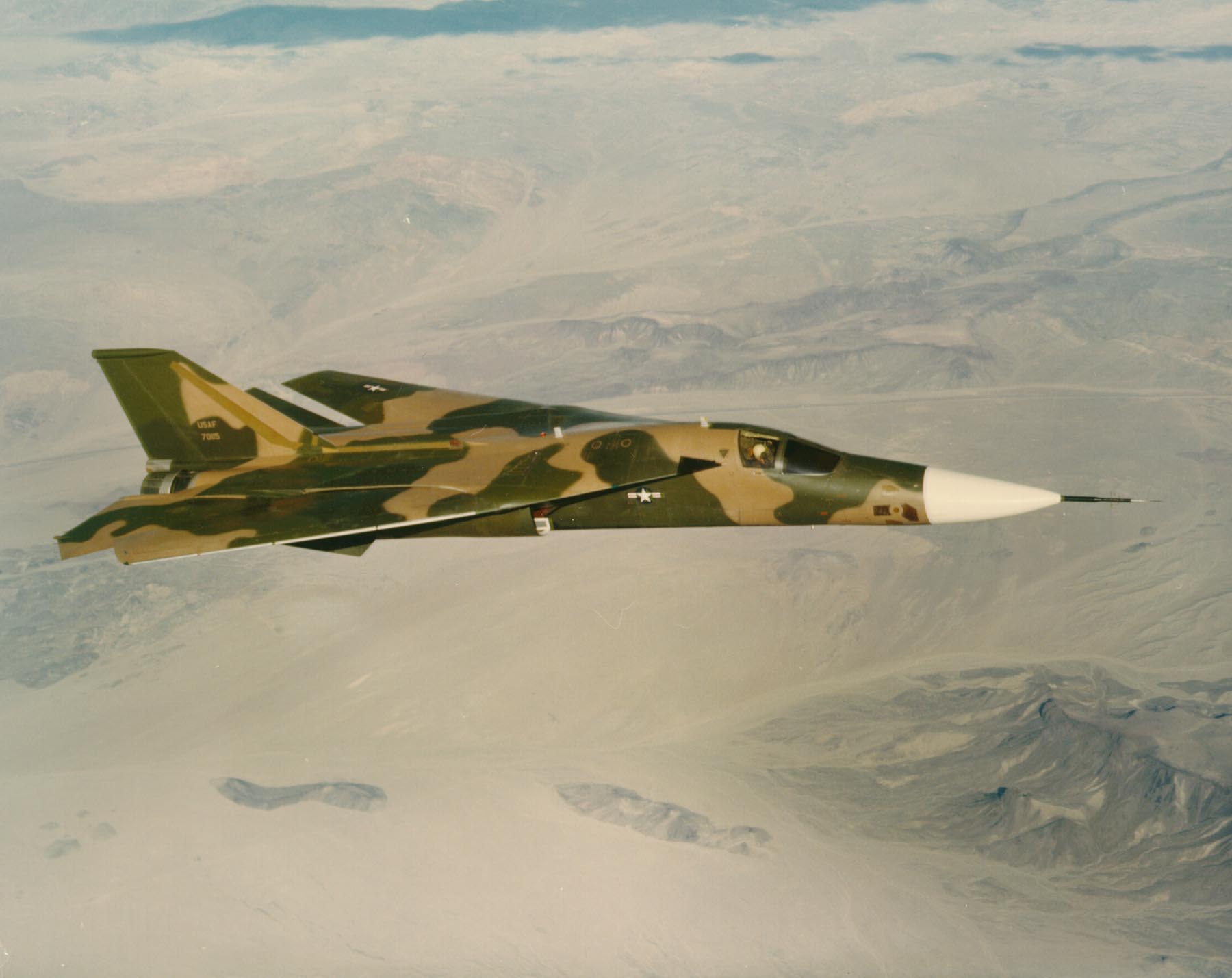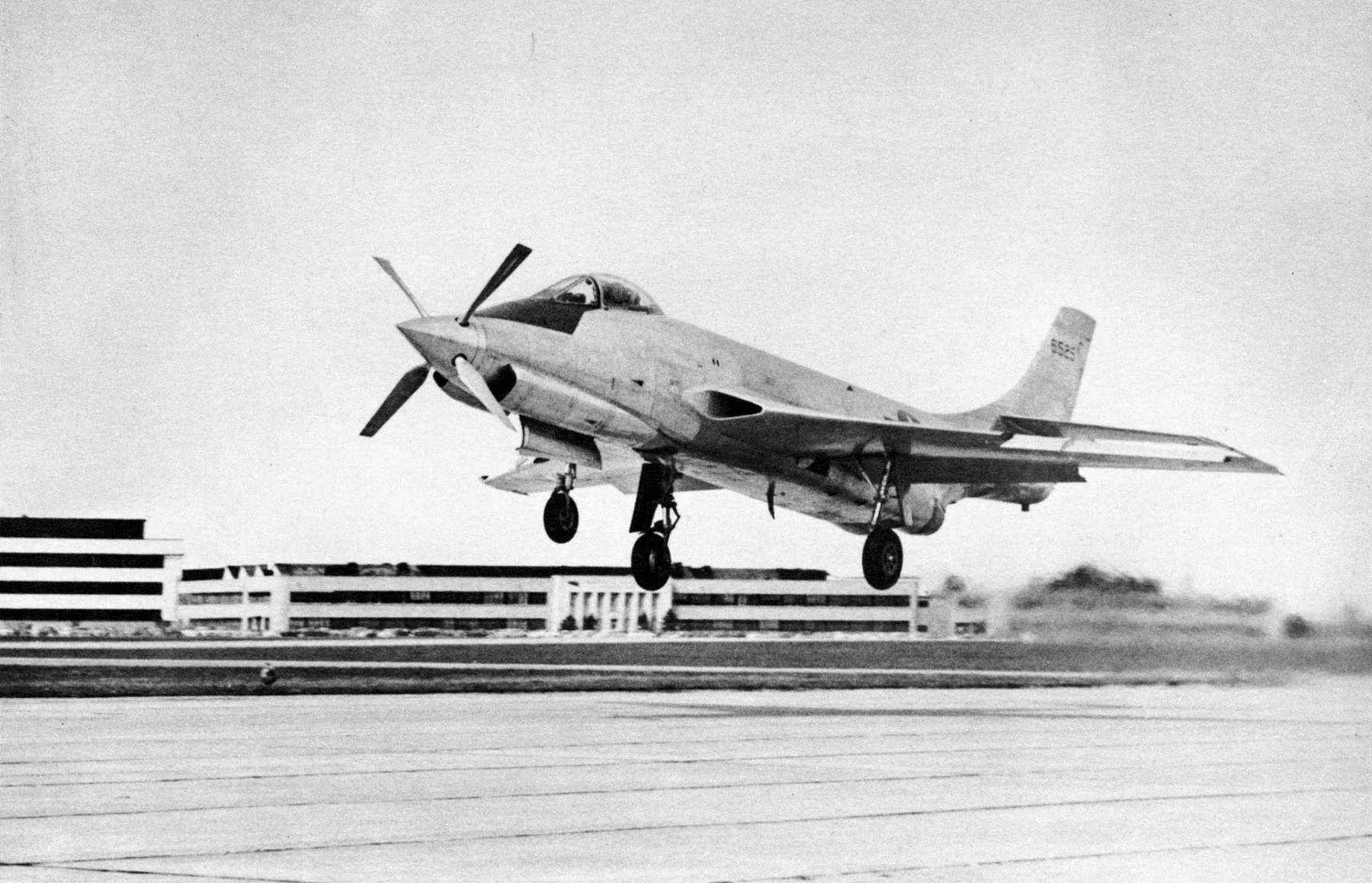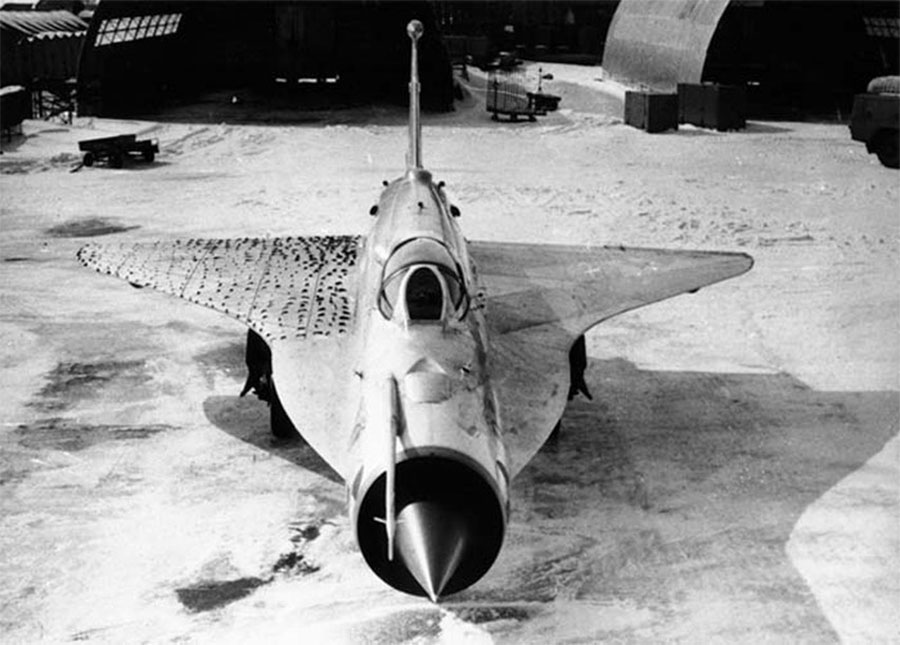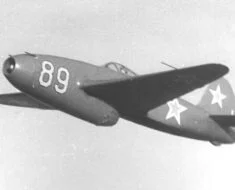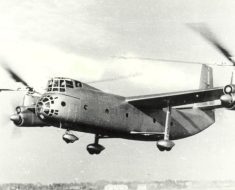The General Dynamics F-111 was the pioneer of many technological advancements in fighter aircraft. The F-111 would become the first fighter to integrate variable wing technology and open the way for many other aircraft to follow.
This supersonic aircraft could reach a maximum speed of 2.1 Mach at high altitudes and 1.2 Mach at sea level, which gave the aircraft the ability to escape the enemy’s air defense by flying low. The plane was praised for its mission success rate and engaged in combat in Vietnam, Laos, Cambodia, Libya, and Iraq.
Its unique shape and long nose would give it the unofficial name Aardvark, which would be recognized by USAF only upon retirement. The aircraft was produced in different variants including strategic bombing and electronic warfare.

Contents
Development
The need for the U.S. Air Force and U.S. Navy to develop a new fighter aircraft, which could conduct different missions was very evident in the early 60s. The first event to mark the need for improvements occurred on May 1960, when the Soviet Air Defense Force shot down the CIA’s U2 using an S-75 Dvina surface-to-air missile.
Read More: A-10 Tankbuster – The Plane Built Around a Gun
These missiles were able to shoot down adversary aircraft at an altitude of 20km (65,600ft). This incident made it clear that the U.S. could no longer count on B-47 conducting missions in Soviet Union territory at high altitudes.
To escape the Soviet radars and air-defense systems, the USAF was required to develop a supersonic low-flying aircraft with interceptor capabilities.

Just a couple of years before, the NACA (predecessor of NASA), had experimented with variable-sweep wing aircraft, which would be useful for the development of the new fighter aircraft.
This innovative technology could be integrated into the new fighter generation. Variable-sweep wings would offer higher speed, shorter take-off distance, and heavier payload.
On the other hand, the U.S. Navy had grown concerned about the Soviet anti-ship missiles that could be launched by their submarines and jets. They wanted a long-range (long loitering hours) interceptor aircraft with a strong radar to intercept enemy bombs and missiles.
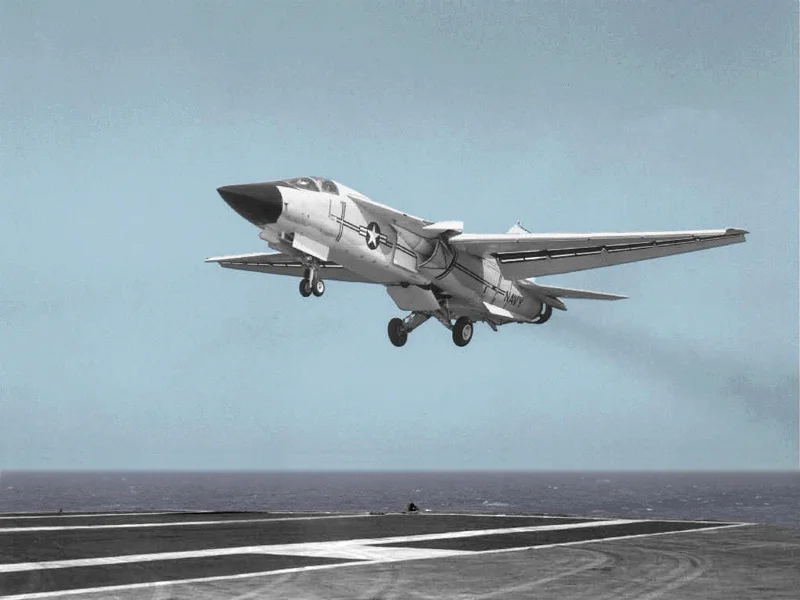
This aircraft should have capabilities that would exceed F-4 Phantom II aircraft’s capabilities, and it would serve as the base plane for their Fleet Air Defense.
Having taken under consideration both, U.S. Air Force and the Navy, the DoD decided to initiate the Tactical Fighter Experimental (TFX) on June 1961 under the Secretary of Defense Robert McNamara.
Both the Air Force and the Navy wanted to keep their programs separate, but ultimately it was decided that the TFX would work on producing an aircraft for both services. Nevertheless, the requirements set for the companies to submit proposals were mainly based on Air Force requests.

Late in 1961, DoD received proposals from six companies: General Dynamics, Boeing, North American, Lockheed, McDonnell, and Republic. Only Boeing and General Dynamic’s proposals managed to convince the evaluators, though, the Navy would not be pleased with either proposal.
After several rounds of revisions, Boeing’s proposal was recommended to advance to the design phase. However, the Secretary of Defense selected General Dynamics’ proposal as it was closer to the Navy’s requirements compared to Boeing.
General Dynamics began its work on the new Fighter, labeling it F-111 which would be available in two versions: F-111A to fit the requirements of the Air Force and the F-111B for the Navy.

The aircraft would have variable wing and after-burning turbofan engines. General Dynamics was aware of its shortcomings in building a carrier-based fighter, which is why it asked the Grumman company to help them with the F-111B version (Navy).
The aircraft would be using the 2x Pratt & Whitney TF30-P-1 engines that produced 12,000 lbf (53 kN) thrust each (18,500 lbf (82 kN) with an afterburner).
Read More: Douglas X-3 Stiletto – The Flying Shoe
As requested by the Navy, the aircraft would have a side-by-side crew seat, which would stand on an escape capsule rather than having ejector seats. Even though they used the same airframe structural components, the F-111 B version was made shorter (2.6m/8.5ft) to fit Navy carrier elevator decks.

It would also have longer wings to increase the on-station time. This version would be equipped with AN/AWG-9 Pulse-Doppler radar to identify adversary assets and missiles and AIM-54 Phoenix missiles to destroy them.
On the other hand, the Air Force version would host two other types of radars: AN/APQ-113 attack radar and AN/APQ-110 terrain-following radar.
The F-111A first flew on 21 December 1964 from Carswell Air Force Base, Texas. While the F-111B first flew on 18 May 1964.

The Navy was very concerned with the TFX program from the beginning, having objected to all proposals submitted. Eventually, in 1968, the Navy’s F-111B version was shut down after all the investment due to the Navy’s additional requirements for the fighter, including an unachievable desired weight and performance.
However, General Dynamics kept working on the F-111A aircraft, which would end up having integrated that period’s newest technology like the variable-wing, afterburning turbofan, escape capsules, and terrain-following radar.
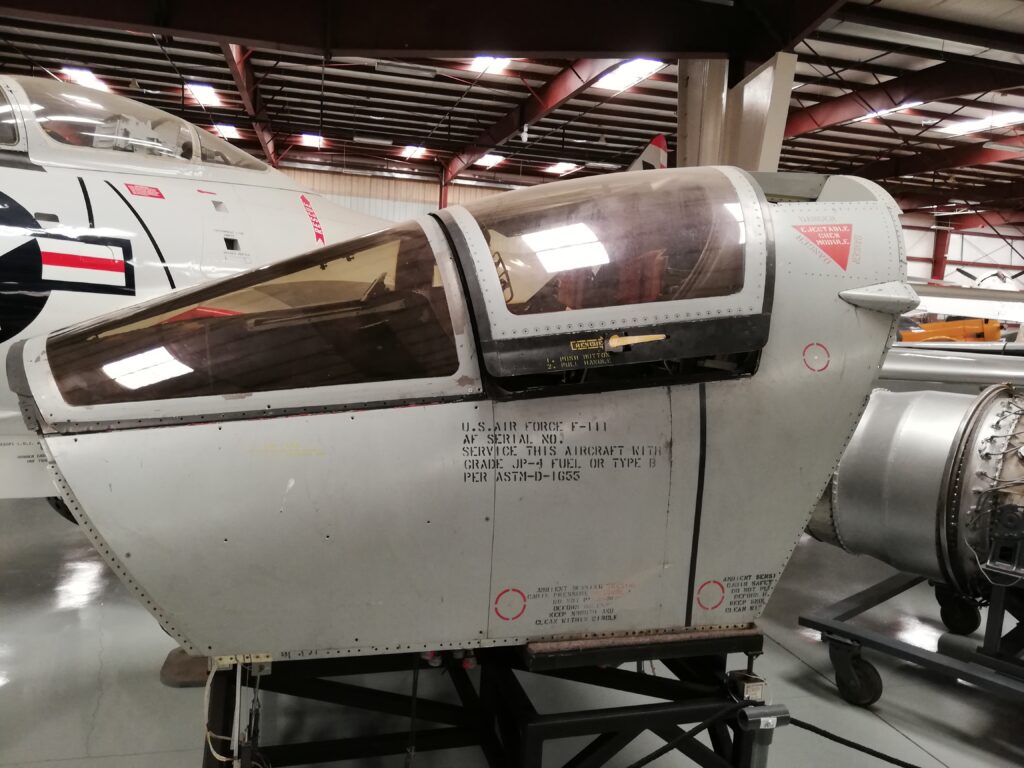
The updates and improved features would eventually result in new versions. F-111C version was produced for the Royal Australian Air Force, which had features integrated from both Air Forces F-111A and Navy’s F-111B.
The F-111D version was produced between 1970 and 1973 and received numerous updates based on the F-111A version, including the new glass cockpit, AN/APQ-130 attack radar, and new terrain-following radar Sperry AN/APQ-128.
However, this version of the aircraft had numerous issues and the fleet was completely retired by 1992.
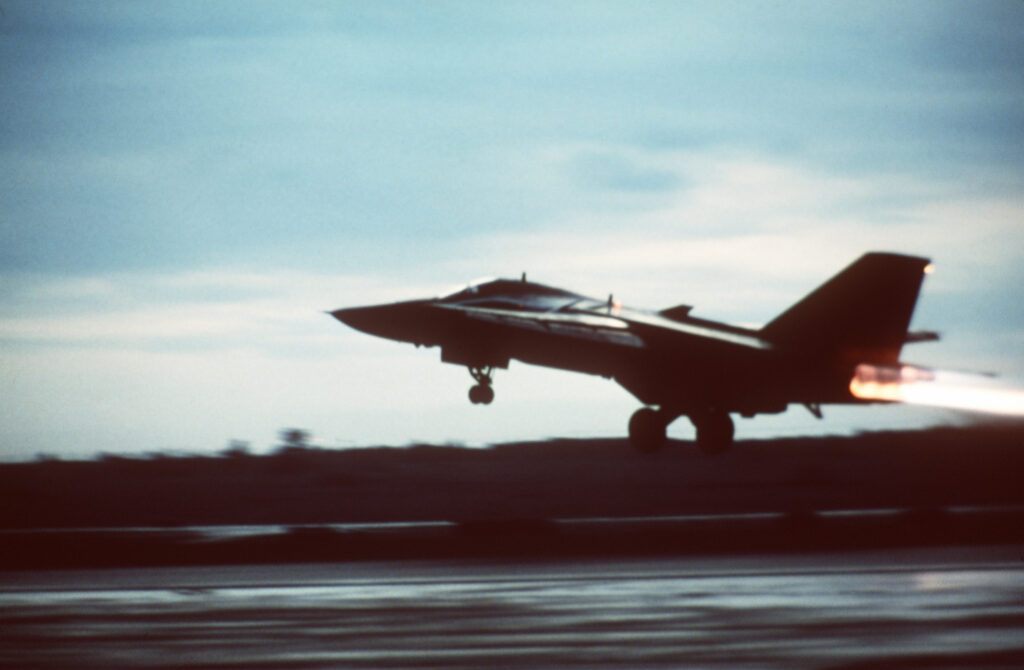
General Dynamics would go on to produce the F-111E version between 1969 and 1971. Though, the superior version of the F-111 aircraft would be the F-111F version, which was regarded as the Cadillac of the F-111s.
This version would be produced between 1970 and 1976. It used two TF30-P-100 engines which powered the aircraft and greatly improved its performance, achieving 35% more thrust than the previous versions.
This aircraft was produced to serve numerous roles within the Air Force, including bombing while flying at low altitudes to escape the enemy’s air defense.

With the intention of replacing the Convair B-58 Hustler and some rising concerns on the reliability of B-52s, the Air Force would request a bomber version of the F-111, codenamed, FB-111A.
This strategic bomber aircraft would share some features with the F-111B version’s wing length. Due to the increase in the take-off weight, the aircraft would also receive a strengthened landing gear.
Read More: Su-25 Frogfoot – Devastating Soviet Ground Attacker
This version would be equipped with the Boeing AGM-69 SRAM nuclear missiles and had a maximum weapon load of 16,100 kg (35,500 lb).

Similarly, for the purpose of replacing Douglas EB-66 “Destroyer” aircraft, which served as an electronic warfare aircraft, the Air Force would request to convert 42 F-111A, into electronic warfare aircraft, later codenamed EF-111A “Raven”.
Grumman company was responsible for the work and would convert the aircraft with a distinct equipment bulge on their tail.
In total, there were 563 aircraft built of which 76 were bombers and 42 would come to be electronic warfare aircraft.

Operational History
The aircraft would enter the service of the United States Air Force upon its initial delivery on 17 July 1967. The Royal Australian Air Force would receive its first operational aircraft on 15 March 1973.
This F-111 would play a substantial role for USAF in the Vietnam War, where the USAF’s 474th Tactical Fighter Wing would first use this aircraft in combat in 1968. While this deployment would demonstrate the effectiveness of this aircraft, it also resulted in 3 losses.
From the retrieved parts of one aircraft, USAF would identify an issue with the failure of a hydraulic control-valve rod. It would take 4 years for the F-111s to return to Vietnam and would go on to conduct over 4000 combat missions.

Some of the operations in which the F-111s participated include “Operation Linebacker” and “Operation Linebacker II” against the North Vietnamese, “Operation Phou Phiang III” against the Communist Pathet Lao during the Lao Civil War, and bombing operations against Khmer Rouge in Cambodia in 1973.
Later in 1975, when the Khmer Rouge took control of the merchant ship SS Mayaguez, and took hostage American citizens, F-111s would be used for air support during the subsequent operation to rescue them from Koh Tang Island.
The aircraft would also participate in “Operation El Dorado Canyon” in 1986 against Libya. In 1991, F-111s would be part of “Operation Desert Storm” against Iraq.
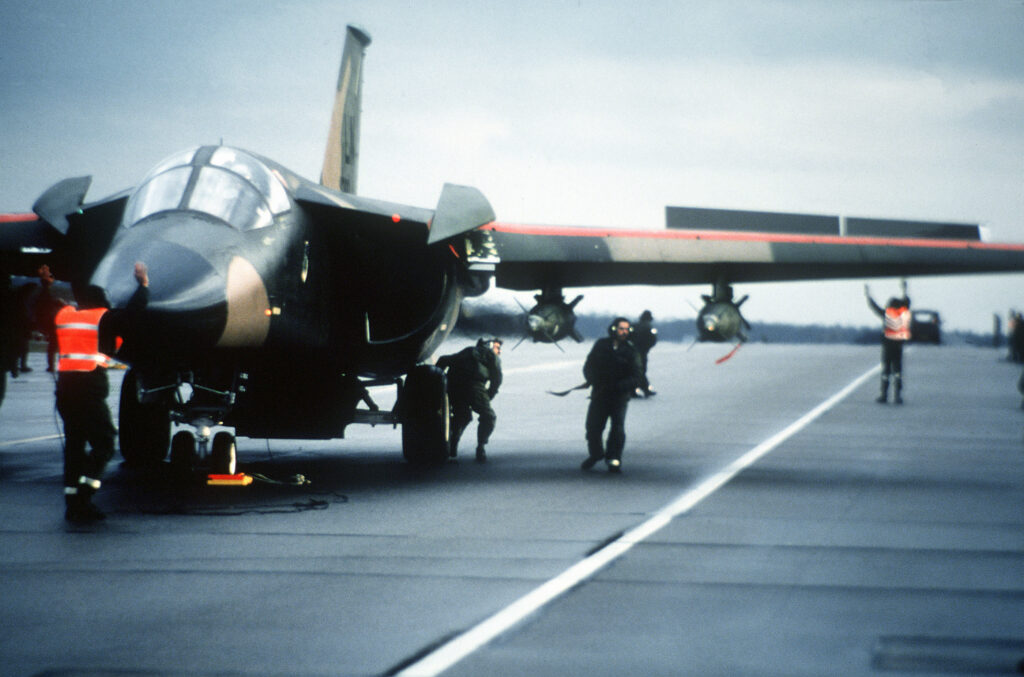
For its effectiveness in combat missions, the plane would receive numerous praises from both its operators and adversaries. The North Vietnamese would call the aircraft the “Whispering Death”.
The Vietnam War Pilot Richard Crandall would refer to the F-111 as “the best fighter in the world”. During Desert Storm, it would also receive the name “tank plinking” as it destroyed over 1500 Iraqi armor vehicles and tanks.
During the same operation, the aircraft would hold the best ratio of successful missions of any fighter.

In service of the Australian Air Force, the aircraft would not engage in any combat. Nevertheless, the F-111 fleet stayed ready and alert to attack the Indonesians during and after the declaration of independence of East Timor. F-111s were also used to sink a seized North Korean drug smuggling ship.
The most unique mission of this aircraft remains the FB-111 urgent mission of picking up and delivering a heart for transplant within the USA for a sick patient.
Retirement
The F-111s remained in service in USAF until 1998. The FB-111s retired in 1993, followed by a USAF retirement ceremony for F-111s in July 1993.

The EF-111 version was the last to retire in 1998. However, the Australian F-111C/G would remain in service in Royal Australian Air Force until late 2010. The airplanes would be replaced by fourth-generation fighters and advanced B-1B Lancer bombers.
Read More: Douglas XB-42 Mixmaster – Good Vibrations?
Different versions of the aircraft are showcased in museums all around the United States, with the first-ever F-111 exhibited at the Air Force Flight Test Center Museum, Edwards AFB, Palmdale, California.
Additionally, an F-111G is displayed in the RAAF Museum, Point Cook, Victoria, Australia, and an F-111E and F-111F can be seen in museums in the UK.
If you like this article, then please follow us on Facebook and Instagram.
Specifications
- Crew: 2
- Length: 73 ft 6 in (22.40 m)
- Wingspan: 63 ft (19 m)
- Swept wingspan: 32 ft (9.8 m) swept
- Height: 17 ft 1.5 in (5.220 m)
- Empty weight: 47,200 lb (21,410 kg)
- Max takeoff weight: 100,000 lb (45,359 kg)
- Powerplant: 2 × Pratt & Whitney TF30-P-100 afterburning turbofan engines, 17,900 lbf (80 kN) thrust each dry, 25,100 lbf (112 kN) with afterburner
- Maximum speed: 1,434 kn (1,650 mph, 2,656 km/h) at altitude
- Range: 3,210 nmi (3,690 mi, 5,940 km)
- Service ceiling: 66,000 ft (20,000 m)
- Rate of climb: 25,890 ft/min (131.5 m/s)

